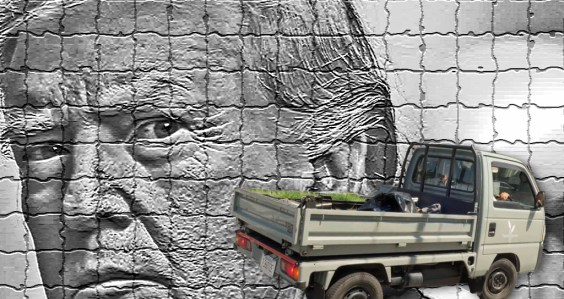At the Transportation Research Board’s 91st annual meeting here in DC, it’s hard to miss the booth handing out copies of a bright blue pamphlet filled with illustrations of busy tree-lined streets, where bicyclists and buses work their way through a bustling urban bazaar. The booth is the Congress for New Urbanism’s “occupation” of TRB, and the pamphlet is their new illustrated Sustainable Street Network Principles, a document aimed at explaining in very basic terms what’s wrong with America’s streets — and how to fix them.
The goal of the Principles is to promote development patterns that add value to communities. The way to do that, said CNU PresidentJohn Norquist, is to design streets to play three simultaneous roles: that of a transportation thoroughfare, a commercial marketplace, and a public space. “Typically, U.S. DOT and State DOTs tend to look at roads only in the dimension of movement, and even in that one dimension, their rural-style forms fail in the city,” Norquist says.
The principles are a plain-language counterpart to the Institute of Transportation Engineers’ “Designing Walkable Urban Thoroughfares,” a collaborative effort with CNU which came out in March 2010 and is written in “engineerese” according to Norquist. By contrast, “the Principles are very readable,” he said, “and can be used to encourage local public works authorities or departments of transportation to do something in cities that adds value to neighborhoods.”
Those authorities don’t always have a very good record in that department. For decades now, government transportation policy has been geared toward speeding up long trips, while ignoring issues of walkability and the corresponding value added to neighborhoods. “If one person has to cross the street to get to work, and another drives 25 miles to work in the same building, the government is obsessed with helping the guy who drives, even though the guy who walks contributes more net value [by using fewer resources, spending less time in traffic, etc.]” Norquist told Streetsblog. “If you look at the little blue book, it’s designed to challenge that idea.”
Read more...







